Cooling system and backplate
Of course, the generated waste heat is directly related to the recorded power, for which the cooling solution is responsible for optimum dissipation. The backplate can even actively help here, because it serves not only for the optics and stabilization of the card. In the cut-out areas of the folding are thicker thermal guide pads, which touch the back of the board in the area of the voltage converters and provide an additional heat dissipation.

| Cooling system at a glance | |
|---|---|
| Type of cooler: | Air |
| Heatsink: | Aluminum heat sink for the GPU with ground-and-up heatpipes directly on the GPU Memory cooling (modules, voltage converters) via mounting frame on the heat sink |
| Cooling fins: | Aluminum, horizontal alignment related |
| Heatpipes | 2x 8 mm, copper composite |
| VRM cooling: | GPU VRM via an integrated heat sink in the cooler Memory VRM on the back via backplate |
| RAM cooling | via mounting frame and indirectly via the heatsink |
| Fan: | 3x 8 cm fan modules (7.7 cm rotor diameter) 11 rotor blades each semi-passive regulation |
| Backplate | Aluminum Cooling function, inside foiled with cutouts for pads RGB Effects |
The card uses a simple slat cooler with thick aluminium base plate, which also serves as a heat sink and holder for the two sanded 8 mm heatpipes (DHT principle). These heatpipes do not completely cover the entire GPU and you can see the tendency to save money.
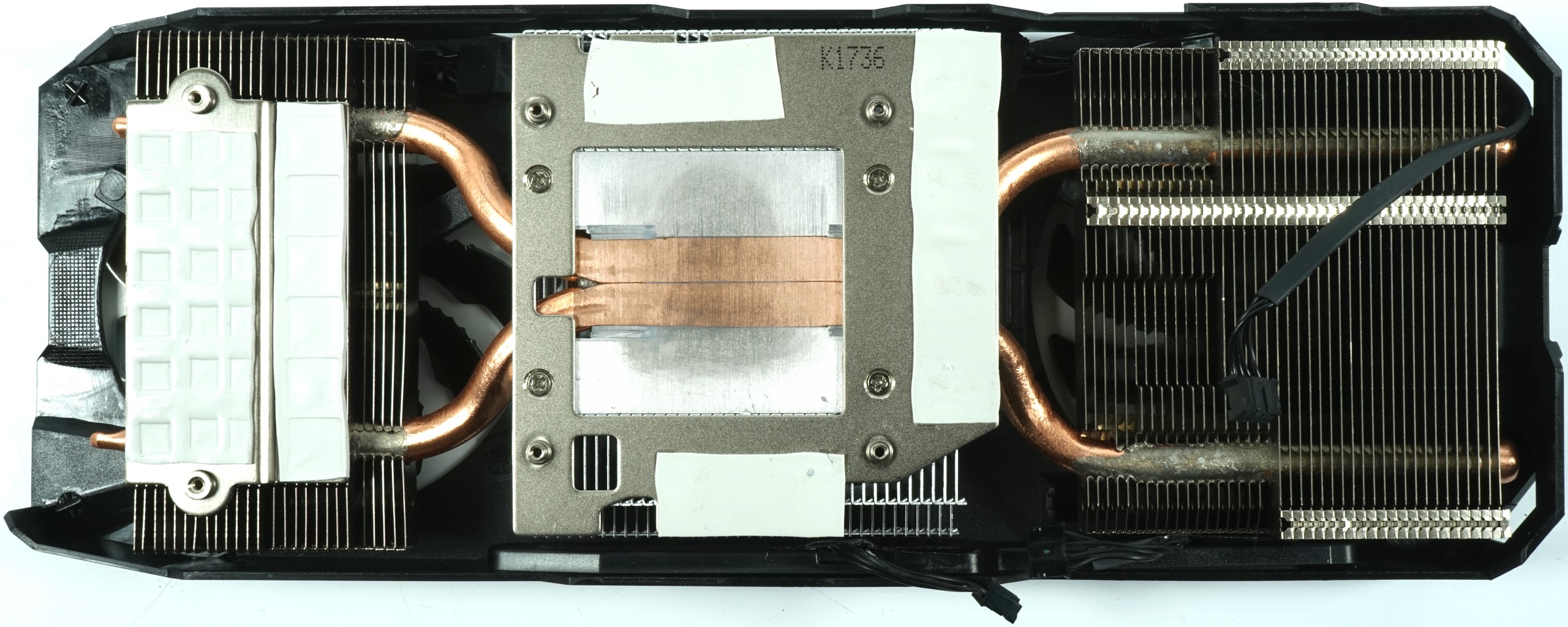
Fan curves and noise emission ("volume")
The fan curves show that Gigabyte has to compensate for the lower radiator surface and thus the very good weight with proper fan speeds. material costs, the required power for the fans and the associated noise (he) carries the customer. But it reads worse than it sounds in reality.
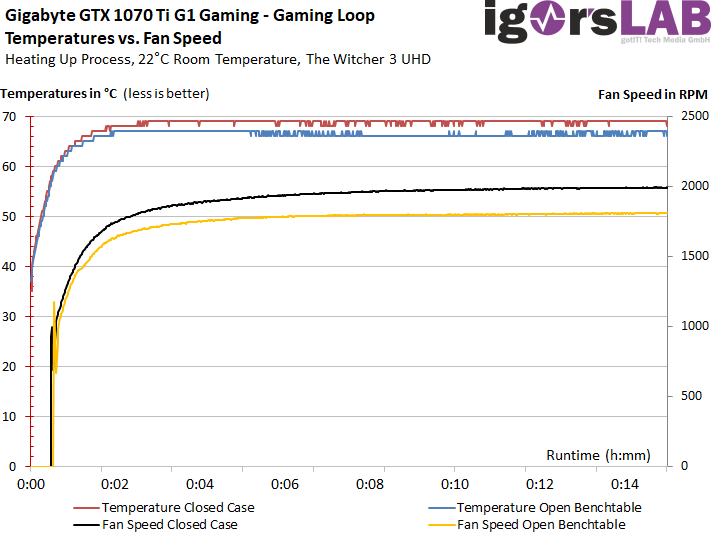
The whole thing doesn't look much different with the stress test. In summary, the card with the three smaller fans can be acoustically not a silent wallflower. But it is still going reasonably well at the back, as we will see in a while.
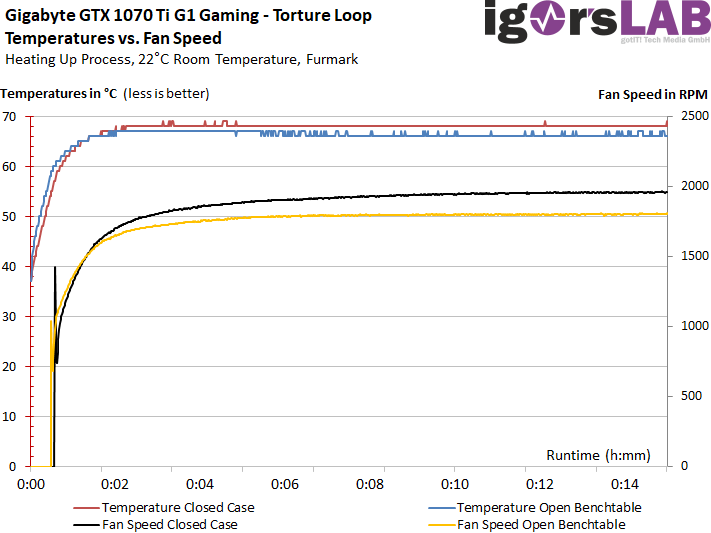
The card hardly has any reserves to rotate the fans lower. It would certainly work, but then it cost at least one bost-step.
| Measurements for fans and noise emission |
|
|---|---|
| Fan speeds Open Benchtable Maximum |
1825 rpm |
| Fan speeds Open Benchtable Average |
1802 rpm |
| Fan Speeds Closed Case Maximum | 2001 rpm |
| Fan Speeds Closed Case Average | 1992 rpm |
| Noise emission (air) Maximum |
40.8 dB(A) |
| Noise Emission (Air) Average |
40.2 dB(A) |
| Noise Emission (Air) Idle | 0 dB(A) |
| Sound characteristic / Hearing impression |
hardly lower frequency bearing noises audible engine noise< 1 Hz clear air/demolition noise light voltage transformer noises |
To illustrate our subjective audio impression once again, we now have a high-resolution graphic with the complete frequency spectrum of our laboratory measurement:
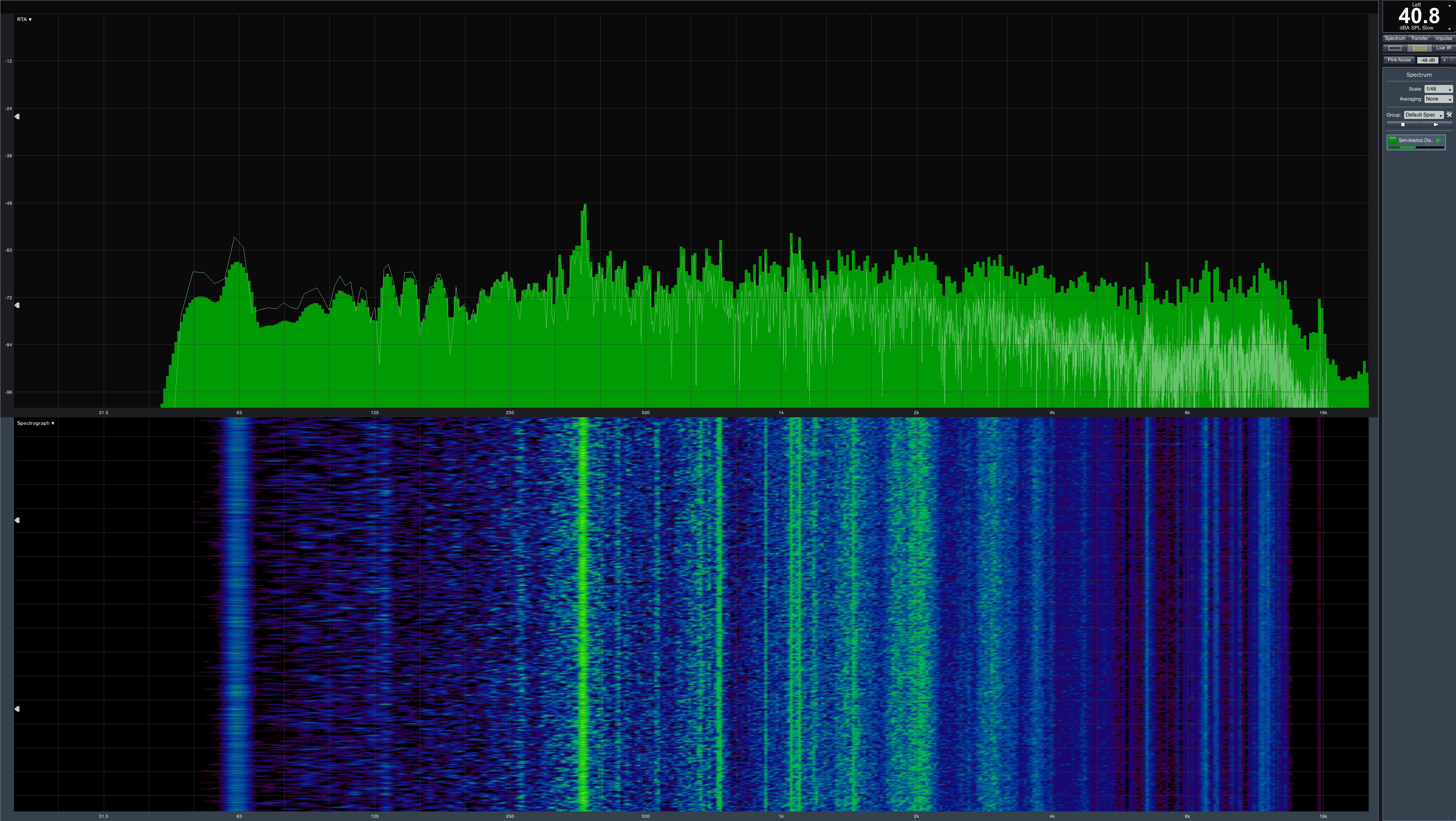
The almost 41 dB(A) are of course not a brilliant performance, but for such a light map and the measured temperatures quite remarkable. So cost-down can work, but in this case it's a bit of a noise.
















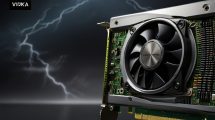














Kommentieren